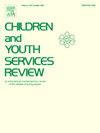澳大利亚脑瘫青年的能力建设目标:对国家残疾保险计划公开数据的分析
IF 2.4
2区 社会学
Q1 FAMILY STUDIES
引用次数: 0
摘要
澳大利亚国家残疾保险计划(NDIS)旨在为残疾人提供以人为本的护理,促进独立和社会参与。能力建设支持对于患有脑瘫(CP)的年轻成年人发展必要的终身技能至关重要。方法使用从2023年6月季度开始公开的NDIS参与者和支付数据集进行回顾性横断面分析。提取并分析了15-34岁患有CP的年轻人的数据,以检查能力建设目标的特征和资金分配,并与患有唐氏综合征和脊髓损伤(SCI)的同龄人进行了比较。结果99.5% (n = 6273)的15-34岁患有CP的NDIS参与者确定了至少一个能力建设目标,总计110,234个目标。能力建设支持的平均年支付额随着年龄的增长而增加,从15-18岁的2.7万美元增加到25-34岁的5.9万美元。最常见的能力建设目标是“日常生活”、“社会和社区参与”以及“健康和福祉”。与患有唐氏综合症和脊髓损伤的同龄人相比,患有CP的年轻人获得的能力建设支持的类型和资金分配存在差异。结论:本研究强调了年轻CP患者成年后NDIS资金分配的可变性,强调了量身定制资金策略的必要性。个性化的目标设定和支持与国际最佳实践保持一致,提高独立性和生活质量。需要进一步的研究来评估ndis资助的支持的结果,确保公平的资源分配,并为关于残疾人包容性政策的全球讨论提供信息。本文章由计算机程序翻译,如有差异,请以英文原文为准。
Capacity Building goals in young people with cerebral palsy in Australia: Analysis of publicly available National disability Insurance Scheme data
Background
The Australian National Disability Insurance Scheme (NDIS) aims to provide person-centred care for individuals with disabilities, promoting independence and societal participation. Capacity Building supports are critical for young adults with cerebral palsy (CP) to develop essential lifelong skills.
Methods
A retrospective cross-sectional analysis was conducted using publicly available NDIS Participant and Payment datasets from the June 2023 quarter. Data for young adults with CP aged 15–34 years were extracted and analysed to examine characteristics and funding allocations for Capacity Building goals, with comparisons to peers with Down syndrome and spinal cord injury (SCI).
Results
99.5 % (n = 6,273) of NDIS participants aged 15–34 with CP identified at least one Capacity Building goal, totalling 110,234 goals. Average annual payments for Capacity Building supports increased with age, from $27,000 for those aged 15–18 to $59,000 for those aged 25–34. The most frequent Capacity Building goals identified were ‘Daily Living’, ‘Social and Community Participation’, and ‘Health and Wellbeing’. Variations were observed in the types and funding allocation of Capacity Building supports accessed by young adults with CP compared to peers with Down syndrome and SCI.
Conclusion
This study highlights variability in NDIS funding allocation for young adults with CP as they transition into adulthood, emphasising the need for tailored funding strategies. Individualised goal setting and supports align with international best practices, enhancing independence and quality of life. Further research is needed to evaluate the outcomes of NDIS-funded supports, ensure equitable resource distribution, and inform global discussions on inclusive policies for people with disabilities.
求助全文
通过发布文献求助,成功后即可免费获取论文全文。
去求助
来源期刊

Children and Youth Services Review
Multiple-
CiteScore
6.30
自引率
6.10%
发文量
303
期刊介绍:
Children and Youth Services Review is an interdisciplinary forum for critical scholarship regarding service programs for children and youth. The journal will publish full-length articles, current research and policy notes, and book reviews.
 求助内容:
求助内容: 应助结果提醒方式:
应助结果提醒方式:


